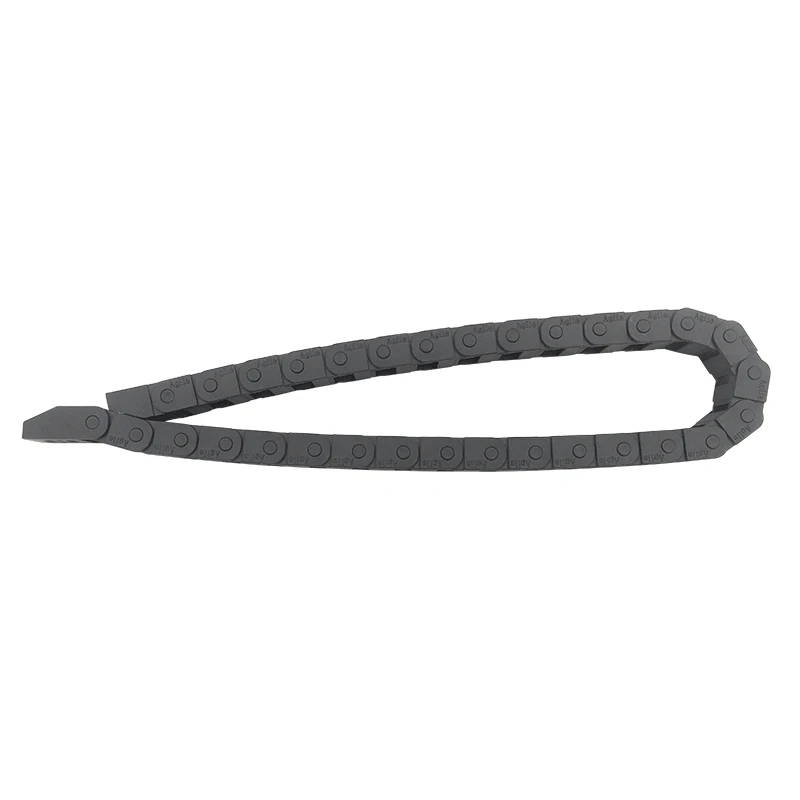enclosed cable carrier
Understanding Enclosed Cable Carriers Ensuring Safe and Efficient Cable Management
In the world of industrial automation and machinery, the effective management of cables and hoses is crucial for safety, efficiency, and productivity. One innovative solution that has gained popularity is the enclosed cable carrier. This device plays a vital role in organizing and protecting cables and hoses during operation, especially in dynamic environments. In this article, we will explore what enclosed cable carriers are, their benefits, applications, and considerations when choosing the right carrier for your needs.
What is an Enclosed Cable Carrier?
An enclosed cable carrier, often referred to as a cable track or cable chain, is a system designed to house and protect cables and hoses that move with machinery. Unlike traditional open cable carriers, enclosed versions provide an additional layer of protection by fully encasing the cables, preventing contamination from dust, dirt, and other environmental factors. This feature is particularly important in industries where hygiene and equipment reliability are paramount, such as food processing, pharmaceuticals, and cleanroom applications.
Benefits of Enclosed Cable Carriers
1. Protection Against Environmental Hazards One of the primary advantages of enclosed cable carriers is their ability to shield cables from harmful elements. They prevent the ingress of dust, moisture, and chemicals, which can lead to cable wear and failure.
2. Reduced Cable Wear and Tear Cables and hoses are prone to abrasion and damage, especially in dynamic applications where movement is constant. Enclosed carriers minimize friction and movement-related wear, extending the lifespan of the cables.
3. Improved Safety By enclosing and organizing cables, the risk of trips and falls due to exposed cables is significantly reduced. This contributes to a safer working environment, lowering the chances of accidents in the workplace.
4. Enhanced Aesthetics and Organization Enclosed cable carriers create a tidier and more organized workspace. This not only improves the aesthetics of the machinery but also simplifies maintenance and troubleshooting by keeping cables in a designated area.
5. Flexibility and Customization Manufacturers offer enclosed cable carriers in various sizes, shapes, and materials, allowing for customization to fit specific applications. Users can select carriers that accommodate different cable types, weights, and movement patterns.
Applications of Enclosed Cable Carriers
Enclosed cable carriers are versatile and utilized in a host of industries and applications, including
- Manufacturing Automation In automated production lines, where machines require constant cable movement, enclosed carriers keep cables secure and operational.
enclosed cable carrier

- Robotics As robots move, enclosed carriers provide much-needed support and protection for the cables that control their functions.
- CNC Machinery In CNC routers and mills, enclosed carriers protect cables from the debris produced during machining operations.
- Entertainment and Theatrical Productions In these scenarios, enclosed carriers manage the cables used in lighting and sound equipment, ensuring seamless operation during performances.
Considerations When Choosing Enclosed Cable Carriers
When selecting an enclosed cable carrier for your application, several factors should be considered
1. Cable Types and Sizes Evaluate the types and sizes of cables or hoses to be housed in the carrier. Ensure the chosen carrier can accommodate their dimensions.
2. Environmental Conditions Assess the working environment. If exposure to chemicals, extreme temperatures, or moisture is expected, select a carrier made from durable and appropriate materials.
3. Movement Range Consider the travel distance and movement patterns of the equipment. The carrier should allow for smooth movement without putting stress on the cables.
4. Weight Capacity Ensure the carrier can handle the weight of the cables and hoses to prevent sagging or failure.
5. Assembly and Maintenance Look for carriers that are easy to install and maintain. Some models feature quick-release mechanisms for easy access to cables as needed.
Conclusion
Enclosed cable carriers represent a significant advancement in cable management technology, offering numerous advantages in terms of protection, safety, and efficiency. By carefully considering the specific needs of your application and selecting the right enclosed carrier, you can enhance the longevity of your cables and improve overall operational workflows. As technology continues to evolve, these carriers will undoubtedly play a pivotal role in shaping the future of industrial automation.








